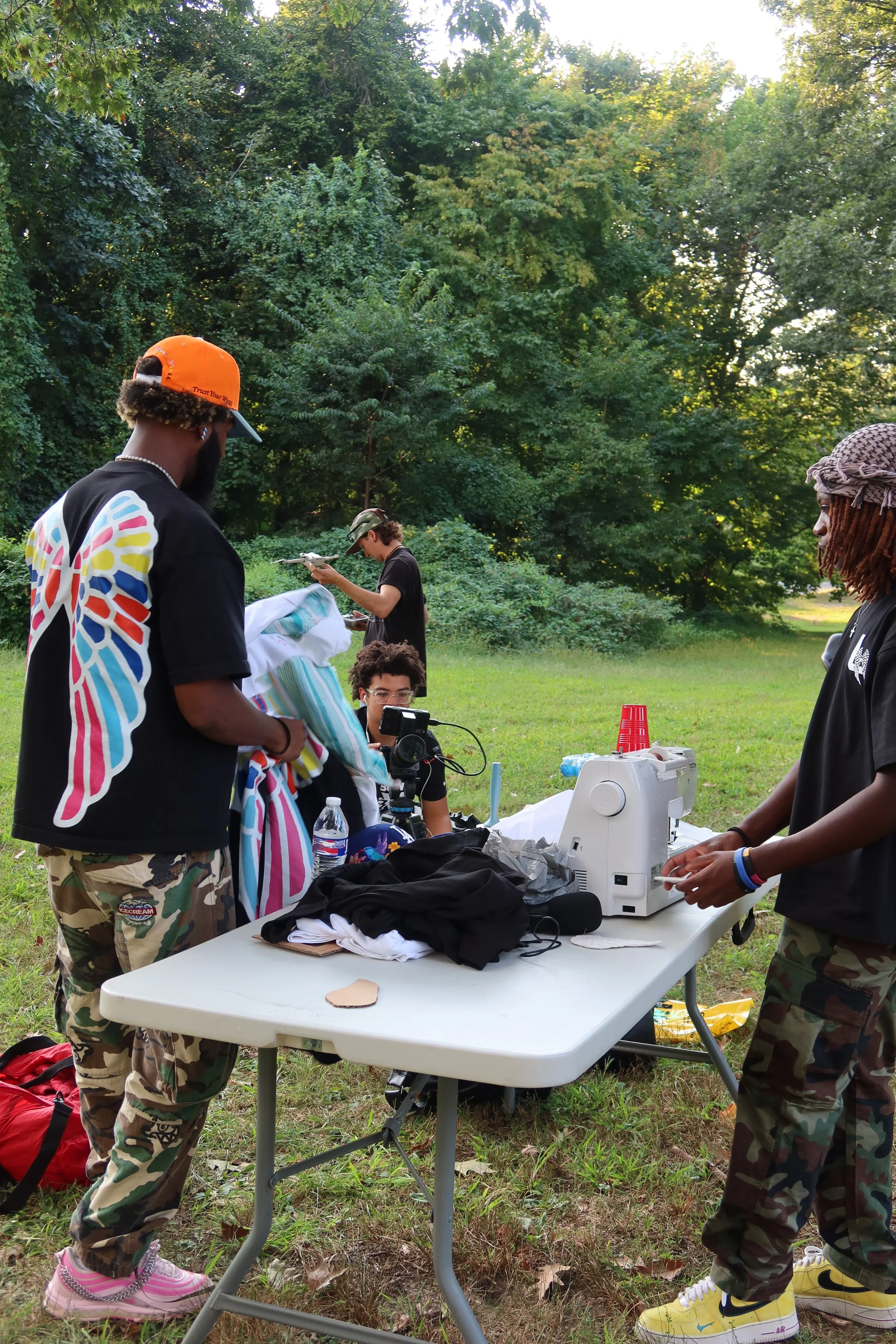Inspired by the Human Experience
*
Inspired by the Human Experience *

We, together.
We all share 2 things: the human experience & the planet. We don’t want to relate to you. We want to connect with you. We’re just like you, and we want to show that. That’s why our clothes are made with the intention of connecting with our community, while protecting it as well. Because they’re not just clothes, and this isn’t just a planet. They’re an external view of our experiences and emotions, all showcased on this place we call home.
From minimal designs to complex displays of artistic expression, the mission remains the same: showing the fast fashion industry that we (planet included of course) are worth more than plastic clothing and trendy graphics. As a small independent brand, we know that this is far from an overnight achievement, especially with lack of accountability and independent action from larger corporations. However, we’re committed to taking the first step that the fast fashion industry is scared to take. Starting with organic materials and upcycled projects, we’re focused on converting passion into time, and time into proof; proof that if we can make a change, then they can change too.

Hey!
Typically, this is where a company continues their spiel on what they’re about and what they stand for, but instead of a chunk of yap, we’re gonna break it down for you so it’s more digestible!
(This is where you start reading the colorful words.)
*If there’s anything Fulbright Scholar Dr. Florence Ling, Department of Chemistry and Biochemistry assistant professor of environmental science at La Salle University taught me, it’s to cite my sources! (Amongst other things, of course) *
This is Us.
We’re all about a sustainable swag filled future. Our founder, Lamar Angels, is actively dedicated to creating a blueprint of what a sustainable slow-fashion future looks like.
“This isn’t about stylish organic T-shirts and quality designed clothing with longevity in the context of durability, lasting for a lifetime, yet not for eternity. This isn’t about portraying a feeling—universal experience through universal design. This is about showing the fast fashion industry that all of these things are easy to accomplish, and in fact…it’s not hard at all.”
— Lamar Angels
34 billion pounds
More than that actually. Over 34 BILLION pounds! That’s the amount of textile waste produced each year, according to a 2022 study conducted by Dielle Lundberg of Boston University of Public Health. This is means an average person produces 81.5-100 pounds of textile waste PER YEAR.
(Those with higher incomes, on average, generate 76% MORE clothing waste than those with lower incomes.)
The Aftermath of Fast Fashion: How Discarded Clothes Impact Public Health and the Environment | SPH
Sixty-Six Percent
The percentage of discarded textiles sent to U.S. landfills. Only some decompose quickly, with most decomposing over hundreds of years! Chemical contents and makeup of these products are to blame for their excessive lifetime.
The Aftermath of Fast Fashion: How Discarded Clothes Impact Public Health and the Environment | SPH
2.8 x More Likely
Landfills. They’re 2.8 times more likely to be located in areas with higher percentage of BIPOC residents. Landfills already pose serious health concerns due to their lack of regulation, however placement in these residential areas show a targeted attack on the health of people of color. This is just one example of environmental injustice created by the fast fashion industry.
The Aftermath of Fast Fashion: How Discarded Clothes Impact Public Health and the Environment | SPH
15% of Used Textiles
(In theory) are recycled. Up to half of those textiles are shipped to other countries in the global south (majority underdeveloped & third world countries), joining landfills there. Through destruction of textile waste, environmental damage as well as critical health impacts, are created due to lack of AMWS (advanced municipal waste systems).
Impacts in the global south far exceed damages done in the U.S. because of the lack of AMWS. This further broadens the environmental injustice created by the fast fashion industry.
The Aftermath of Fast Fashion: How Discarded Clothes Impact Public Health and the Environment | SPH
*Disclaimer*
Whenever conducting research it’s important that we are not subject to bias of one source. This type of practice leads us to become a product of opinion in many cases, rather than individuals who are well educated on the summation of knowledge gathered by the many scholars, scientists, and writers who work passionately and relentlessly to fuel the world for a journey towards a better future.
*To assure that our community is adequately informed and up to date all relevant topics, we will continue to update this section with fresh—credible sources as we continue to conduct research and grow as environmentalist. Thanks for watching the sunset with us and joining the fight for a better world. *
Waste from the West
Much of the textile waste that the Western World produces isn’t disposed of in the West. Instead, it is relocated to underdeveloped countries, like Ghana. Ghana is a country that suffers from the overconsumption and lack of policy and enforcement with the Western World. Click the link below for more information.
PBS NewsHour: Ghana Becomes Dumping Ground for the World's Unwanted Used Clothes
Request a Commission
Submit a request for your own 1-of-1 sustainable swag, handcrafted at a sunset near you.

